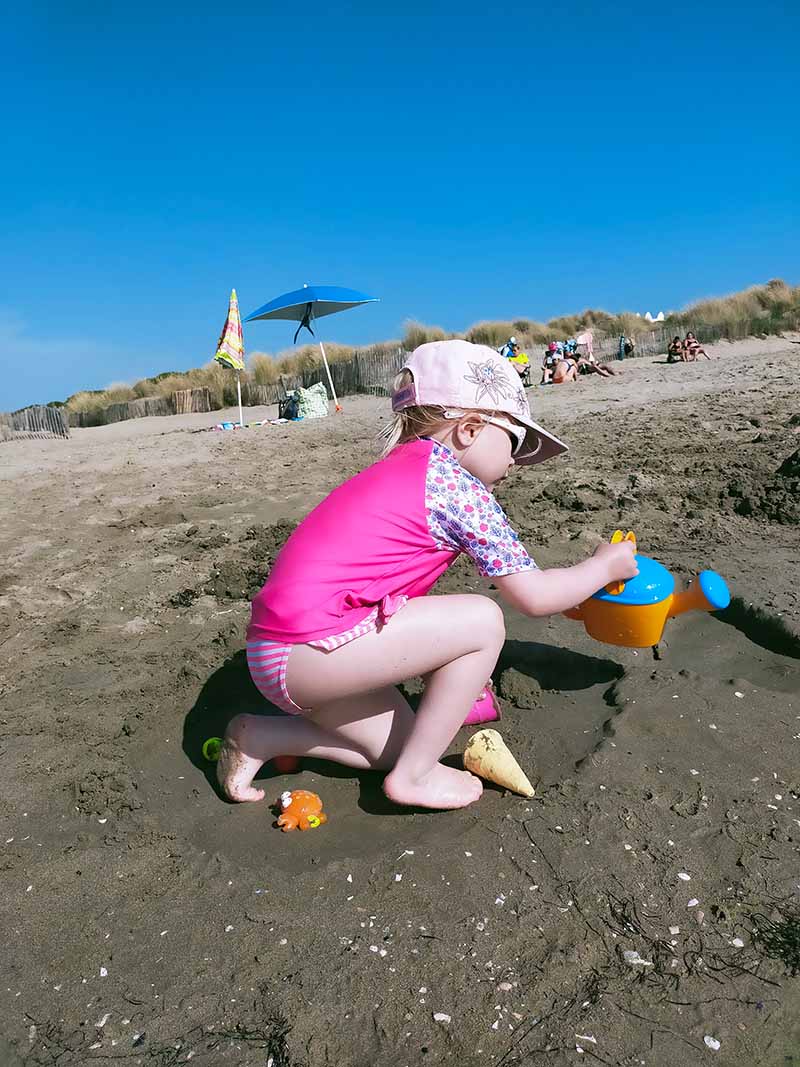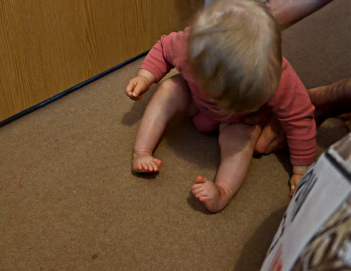
Néis on the beach following club foot treatment with the Cunningham brace
03 June 2023
Néis’s club feet were diagnosed by ultrasound during the second trimester of Marion’s pregnancy and the diagnosis was confirmed when Néis was 4 days old. Club Foot or clubfoot is a term for the medical condition congenital talipes equinovarus (CTEV), it is a deformity that causes the feet to turn inwards and can involve one foot or both. Around 1 in 1,000 babies will have the condition making it one of the more common congenital birth defects.
Around the world treatment protocols for the condition are well established and revolve around what is termed the Ponseti method. In France, Néis’s treatment combined French functional and Ponseti methods. In this protocol, physiotherapy sessions are combined with casting. Néis had her bilateral tenotomy when she was 3 months old and continued to wear her resin casts. Unfortunately, there was no improvement in her condition and when Néis was 9 months old Marion was told that Néis would require another operation.
Marion began searching the web for a solution and eventually found an article about Jerald Cunningham. Marion says: “My dream was to find a brace that would stretch and rehabilitate the feet, almost like having a physiotherapist for 24 hours a day! So I wrote to Jerald and he referred me to Sam and LOC.
When we first met Sam (in 2020) he was really concerned about the state of Néis’s feet, the tenotomy had not worked, dorsiflexion was non-existent, and her feet were very stiff. He was so worried, given Néis’s age, that he called Jerald for his opinion, Jerald was confident that his brace would help. And it has! The Cunningham brace is dynamic, it imitates physio stretches, it’s just so logical, club foot is a muscular problem and muscles are not meant to be immobile, so it makes sense to have a dynamic brace rather than a static one. Nobody knows about this brace in France, we are the first family to have it.
“Néis now only has to wear the brace at night, her feet are so much better, she feels comfortable in her shoes,and she even dances the capoeira! And our French consultant has confirmed that she no longer needs surgery. Throughout Néis’s treatment, Sam has been so professional but also so warm and friendly. We manage a face-to-face consultation once a year and the rest of the time we have virtual appointments and share videos and photos of Néis so Sam can give us appropriate advice.”
If your baby has been diagnosed with Club Foot and you would like to discuss what LOC can do for you please contact us for an informed discussion.

Néis's club feet before treatment
Club foot, or clubfoot, is the general name given for a medical condition called congenital talipes equinovarus (CTEV). Congenital means that you’re born with the condition, which can occur in one or both feet. It is quite common, occurring in around one in every 1,000 babies born in the UK.
The Ponseti method involves manipulation and repeated weekly casting for about five to eight weeks. After that, a small procedure called a tenotomy is carried out under local anaesthetic to lengthen the tight heel cord – known as the Achilles tendon – in the back of your ankle. The treatment follows very strict, well-understood protocols and is the gold standard in corrective treatment for club foot. Indeed, the procedure is used and endorsed by Great Ormond Street.
The Cunningham Brace was designed by Jerald Cunningham, who runs his own clinic in the US. It works using a firm strap around the thigh and a spring that holds the brace up against the bottom of the foot. This means that the brace is always gently stretching your baby’s foot into the correct position, in a similar way that a therapist applies manipulation.
Jerald developed the brace at the request of an orthopaedic surgeon and colleague who saw how distressing the boots and bar process was for many children and parents. Jerald has worked on the design for more than 10 years, tweaking as he goes, based on x-ray evidence after every patient fitting.
No problem. Often parents come to us after they’ve tried persevering with the boots and bar treatment for a few months. It may change our treatment plan a little and your child might need treatment for a bit longer, but the process will essentially be the same.
At the moment we can fit the brace at our clinics in Kingston-upon-Thames and Bristol; in addition, we can do follow up appointments at our Manchester clinic. There is a certain amount we can do virtually, but your first fitting would need to be done in person.
We have the following facilities and amenities at our Kingston Upon Thames location:
We also have the Gait Laboratory for orthotics patients and Onsite Manufacturing for speedy turnarounds and adjustments whilst you wait.